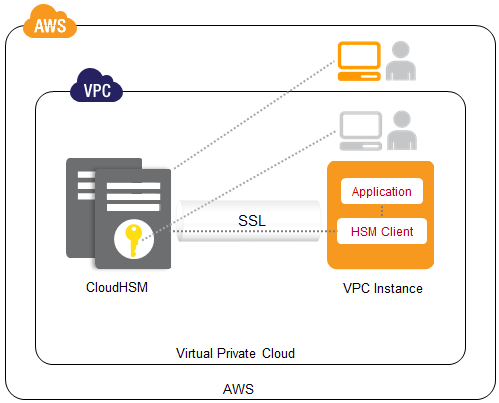AWS News Blog
AWS CloudHSM – Secure Key Storage and Cryptographic Operations
|
|
Back in the early days of AWS, I would often receive questions that boiled down to “This sounds really interesting, but what about security?”
We created the AWS Security & Compliance Center to publish information about the various reports, certifications, and independent attestations that we’ve earned and to provide you with additional information about the security features that we’ve built in to AWS including Identity and Access Management, Multi-Factor Authentication, Key Rotation, support for server-side and client-side encryption in Amazon S3, and SSL support in the Elastic Load Balancer. The Security & Compliance Center is also home to the AWS Risk and Compliance White Paper and the AWS Overview of Security Processes.
Today we are adding another powerful security option, the AWS CloudHSM service. While the items listed above are more than adequate in most situations, some of our customers are in situations where contractual or regulatory needs mandate additional protection for their keys. The CloudHSM service helps these customers to meet strict requirements for key management without sacrificing application performance.
What is an HSM and What Does it Do?
HSM is short for Hardware Security Module. It is a piece of hardware — a dedicated appliance that provides secure key storage and a set of cryptographic operations within a tamper-resistant enclosure. You can store your keys within an HSM and use them to encrypt and decrypt data while keeping them safe and sound and under your full control. You are the only one with access to the keys stored in an HSM.
The AWS CloudHSM Service
The AWS CloudHSM service brings the benefits of HSMs to the cloud. You retain full control of the keys and the cryptographic operations performed by the HSM(s) you create, including exclusive, single-tenant access to each one. Your cryptographic keys are protected by a tamper-resistant HSM that is designed to meet a number of international and US Government standards including NIST FIPS 140-2 and Common Criteria EAL4+.
Each of your CloudHSMs has an IP address within your Amazon Virtual Private Cloud (VPC). You’ll receive administrator credentials for the appliance, allowing you to create and manage cryptographic keys, create user accounts, and perform cryptographic operations using those accounts. We do not have access to your keys; they remain under your control at all times. In Luna SA terminology, we have Admin credentials and you have both HSM Admin and HSM Partition Owner credentials.
AWS CloudHSM is now available in multiple Availability Zones in the US East (Northern Virginia) and EU West (Ireland) Regions. We’ll be making them available in other Regions throughout 2013 based on customer demand.

Inside the AWS CloudHSM
We are currently providing the Luna SA HSM appliance from SafeNet, Inc. The appliances run version 5 of the Luna SA software.
Once your AWS CloudHSM is provisioned, you can access it through a number of standard APIs including PCKS #11 (Cryptographic Token Interface Standard), the Microsoft Cryptography API (CAPI), and the Java JCA/JCE (Java Cryptography Architecture / Java Cryptography Extensions). The Luna SA client provides these APIs to your applications and implements each call by connecting to your CloudHSM using a mutually authenticated SSL connection. If you have existing applications that run on top of these APIs, you can use them with CloudHSM in short order.
Getting Started
The CloudHSM service is available today in the US-East and EU-West regions. You’ll pay an one-time upfront fee (currently $5,000 per HSM), an hourly rate (currently $1.88 per hour or $1,373 per month on average for CloudHSM service in the US-East region). Consult the CloudHSM pricing page for more info.
To get started with CloudHSM or to learn more, contact us. You can also schedule a short trial period using the same link.
In most cases we can satisfy requests for one or two CloudHSMs per customer within a few business days. Requests for more than two may take several weeks.
Learn More
To learn more about CloudHSM, read the CloudHSM FAQ, the CloudHSM Getting Started Guide, and the CloudHSM Home Page.
— Jeff;
